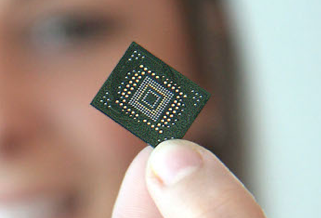
Original Link: https://www.anandtech.com/show/4612/two-new-sata-specs-sata-express-ssd
Two New SATA Specs: SATA Express & µSSD
by Anand Lal Shimpi on August 11, 2011 12:22 AM EST- Posted in
- Storage
- SSDs
- SATA
- SATA Express

The SATA IO working group announced one new spec and that it has begun work on another: µSSD and SATA Express, respectively. These two specs span the gamut from ultra mobile devices all the way to high end PCs and servers. Let's tackle the smaller one first.
Tablets and smartphones are quickly becoming very powerful. We'll see another 20 - 50% gain in CPU performance in the next 12 months, and chances are we'll see a repeat performance another 12 - 18 months after that. As we've learned from the PC industry, increases in processor performance must be met with faster memory and IO. We're already running into IO bottlenecks on tablets. Copying large videos and audio to the current generation of tablets is a pain, with write speeds averaging less than 20MB/s. Faster storage is necessary.
The µSSD spec simply introduces a standard electrical interface for SATA on BGA devices. Currently if you want to connect a SATA controller to a SATA device you use a physical connector, whether standard SATA, micro or mini SATA. Either way it's a big physical connector. With µSSD the SATA interface is in the ball-out of a BGA chip on a motherboard, there's no physical external connector - just route the traces from your SSD to your SATA controller.
What we'll see going forward is integrated SATA controllers in SoCs, which will now have the option of interfacing with either a standard SATA SSD or a µSSD soldered onto the motherboard. The latter is more desirable for ultra small form factors. SanDisk has already been shipping a µSSD compliant device: its iSSD. Expect others to follow.
The next interface is SATA Express. This one is designed to keep SATA relevant while allowing for the growth of high performance SSDs. It took SandForce all of one year to release a controller that could saturate a 6Gbps SATA interface. Many companies have turned to PCI Express as a solution to offer more bandwidth than a single SAS/SATA port can deliver. SATA Express is designed to fix this issue.
The spec won't be complete until the end of the year, but it will allow for two new SATA speeds: 8Gbps and 16Gbps as well as backwards compatibility with existing SATA devices. SATA Express will leverage PCIe 3.0 for higher operating speeds, perhaps indicating that it'll layer on top of PCIe rather than remain as an independent interface. If the spec is completed at the end of this year, don't expect to see controller support until mid to late next year at the earliest. It'll take a while for SSDs to natively support the standard as well.







